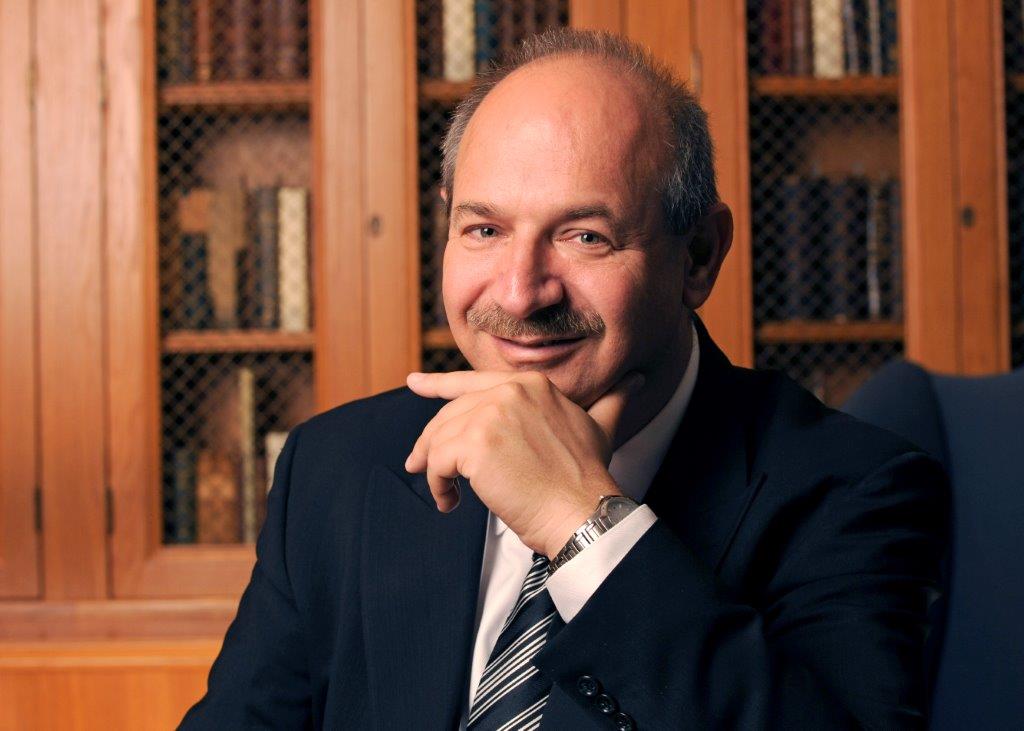Home > About Us > Meet Our Director

Bruce Beutler, M.D.
A pioneer in the study of innate immunity, Bruce Beutler isolated several key cytokines early in his career (TNFα, MIP1α, MIP1β, and others). He went on to discover the elusive sensing mechanism by which host cells recognize microbial invaders, including bacteria, protozoa, fungi, and viruses. Moreover, in work spanning nearly four decades, he identified proteins central to many other biological processes, notably neurobehavioral function, metabolism, and development. His discoveries have led to therapies for crippling and life-shortening diseases that affect millions of people. His work in the innate immunity field was rewarded with a Nobel Prize in 2011, shared with Jules Hoffmann and Ralph Steinman.
Beutler was born in 1957. He became interested in biology at a young age, and began to work in the laboratory during his early teenage years. He received his undergraduate degree from the University of California at San Diego in 1976, and his MD degree from the University of Chicago in 1981. After two years of residency at the University of Texas Southwestern Medical Center, he became a postdoctoral fellow and then an Assistant Professor at the Rockefeller University (1983-1986). There, Beutler was the first to isolate mouse tumor necrosis factor (TNF). He accomplished this by purifying a macrophage-derived protein named “cachectin” to homogeneity. Cachectin was defined as a lipopolysaccharide (LPS)-induced factor that suppressed expression of the anabolic enzyme lipoprotein lipase in 3T3-L1 pre-adipocytes. Beutler discovered that the amino-acid sequence of mouse cachectin was strongly homologous to the amino-acid sequence of the recently-cloned human TNF, and in reciprocal assays, each protein showed both cachectin and TNF activity. After establishing that cachectin and TNF were identical, Beutler hypothesized that this protein was a key executor of the inflammatory response. He demonstrated that neutralization of TNF by antibodies in mice markedly attenuated the lethal effect of LPS, which by then was well known as a molecular signature of all Gram-negative bacteria.
Beutler returned to UT Southwestern in 1986 as an HHMI investigator. There, together with postdoctoral associate Karsten Peppel and graduate student David Crawford, he invented and patented a recombinant inhibitor of TNF, now marketed as Enbrel (Etanercept). To this day it remains widely used in the treatment of rheumatoid arthritis and other inflammatory diseases. Increasingly curious about the nature of the LPS receptor and the nature of innate immune sensing, Beutler used TNF secretion as a biological endpoint to identify the receptor. Working with postdoctoral associate Alexander Poltorak, he positionally cloned a remarkable mutation in mice affecting the so-called Lps locus. At this point in the genome, two separate spontaneous mutations had been shown decades earlier to prevent all biological responses to LPS. This project was particularly ambitious at the time, given that genomic sequencing methods were quite primitive. It consumed the full resources of the lab for approximately five years. However, it led to the remarkable discovery that Toll-like receptor 4 (TLR4) acts as the signaling core of the LPS receptor. Beutler and Poltorak further developed genetic data suggesting that LPS comes into direct physical contact with TLR4, and proposed that other TLRs might also recognize conserved molecular signatures of infection. In time, their discoveries were fully validated by both genetic and structural data.
Moving in 2000 to the Scripps Research Institute in La Jolla, CA, Beutler began to create new phenotypes through ENU mutagenesis, and to solve them by positional cloning. His goal was to understand TLR signal transduction pathways in detail. However, mutant mice were studied in a broad screening pipeline to detect aberrant phenotypes reflective of many physiological disturbances: both immunological and non-immunological in nature. While positional cloning remained difficult for most of this period, Beutler and his colleagues solved approximately 100 phenotypes over the next eleven years, and did so with increasing rapidity as sequencing technology advanced.
In 2011, Beutler returned to UT Southwestern to lead the Center for the Genetics of Host Defense (CGHD). In organizing CGHD, he developed a radically new platform for finding ENU-induced mutations that cause phenotype. Using a combination of technologies (massively parallel sequencing, high throughput statistical computation, and CRISPR/Cas9 targeting for verification), he and his colleagues were able to determine with confidence which ENU-induced mutation in a pedigree was responsible for an observed phenotype, and do so instantaneously. Implementation of this platform has led to the solution of more than 1,000 phenotypes touching on many areas of biological function. Foremost its impact has been felt in the field of immunology; however, new causes of diabetes, neuromuscular dysfunction, and behavioral disturbances have also been seen. Cell biology, structural biology, biochemistry, and genetics all come into play when the mechanism linking a mutation to its phenotype are studied. Many of the laboratories at UT Southwestern collaborate with CGHD, and with the Beutler lab in particular, to achieve this goal. Moreover, many of the discoveries made at CGHD have immediate application to drug development and to the treatment of human disease.
Beutler is currently a Regental Professor and Director of the Center for Genetics of Host Defense at the University of Texas Southwestern Medical Center. He holds the Raymond and Ellen Willie Distinguished Chair in Cancer Research in honor of Laverne and Raymond Willie, Sr. Before he received the Nobel Prize, his work was recognized by the Shaw Prize (2011), the Albany Medical Center Prize in Medicine and Biomedical Research (2009), election to the National Academy of Sciences and Institute of Medicine (2008), the Frederik B. Bang Award (2008), the Balzan Prize (2007), the Gran Prix Charles-Leopold-Mayer (2006), the William B. Coley Award (2005), the Robert-Koch-Prize (2004), and other honors. He is a member of multiple foreign academies of science, including EMBO, Leopoldina, and the Academy of Athens.
